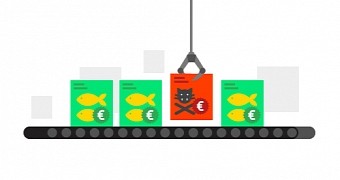In its annual report, Google has announced that its team of 1000+ employees has blocked over 780 million "bad" ads during the past year, compared to 524 million in 2014, and 350 million in 2013.
Google defines bad ads as advertising that contains malicious code (called malvertising), ads that cover up the entire area of the page, and advertisements that intentionally promote fake products and services, used primarily in online fraud.
The company's review process involved both automatic AI-powered algorithms, but also manual reviews carried out by Google employees.
Google blocked 7,000 ads leading to phishing sites
According to the company's 2015 report, its employees suspended more than 10,000+ sites and 18,000+ accounts for attempting to sell counterfeit goods, and another 30,000+ sites for misleading claims, like quick weight losses and miracle hair-growth products.
Google also took down 7,000 phishing sites advertising through its ads program and disabled well over 12 million ads for pharmaceutical products that have yet to obtain an official approval from government agencies.
Furthermore, Google also shut down 10,000 sites offering PUPs (Potentially Unwanted Programs), that either delivered malware, or made unauthorized changes to a user's PC.
Additionally, the company also rejected or took down around 17 million ads that mimicked system warnings or tried to fool users into interacting with them.
Google was also active on the mobile advertising market where it also blackballed 25,000 mobile apps after their developers placed ads too close to native UI buttons, and caused accidental ad clicks.
Ad networks expect damages up to $7.2 billion because of ad bots
The search ad giant is entitled to its actions after, in 2015, an ANA and White Ops study revealed that during the past year ad networks reported click-bot fraud varying from 3% to 37% of its total click-through rates, compared to 2% to 22% reported in 2014.
The same study also estimated that, throughout 2016, ad networks are expecting to lose up to $7.2 billion to fraudulent ad impressions or click-bots.

 14 DAY TRIAL //
14 DAY TRIAL //